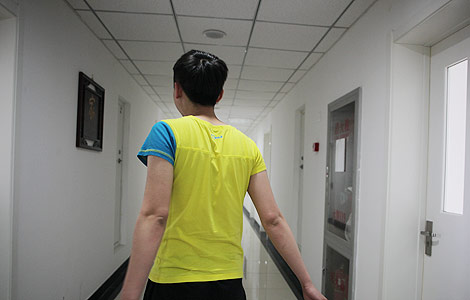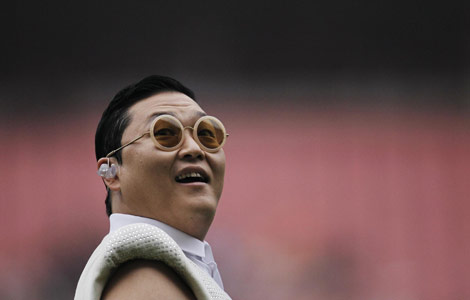Court ruling could impact Asian students
Updated: 2013-06-24 11:16
By Kelly Chung Dawson (China Daily)
|
||||||||
The Supreme Court is expected to announce a ruling this week on an important affirmative action case that could eliminate race-based university admittance quotas for good, an issue that has struck a chord with a number of Asian American advocacy groups.
When Abigail Fisher, 23, was rejected from the University of Texas-Austin in 2008, she sued the school for discriminating on the basis of her (Caucasian) background. UT-Austin accepts students either through its Top Ten Percent Plan (in which Texas high school seniors who graduate in the top 10 percent of their class are guaranteed admission), for which Fisher did not qualify; or for others, through acceptance determined by factors including extracurricular activities, SAT scores and ethnic background.
Fisher graduated from high school with a 3.59 GPA, and claims that a number of her own high school classmates who were accepted at UT-Austin had lower GPAs and test scores - but happened to be minorities.
"I was taught from the time I was a little girl that any kind of discrimination was wrong and for an institution of higher learning to act this way makes no sense to me," she said in a public statement. She believes that the university's admissions policy violates the 14th Amendment's Equal Protection Clause.

For Asian students, the issue is particularly relevant in light of Princeton sociology professor Thomas J. Espenshade's 2009 study, in which he demonstrated that Asian Americans needed to score 140 points higher than Caucasian students to be admitted to elite schools. Espenshade, who authored the book No Longer Separate, Not Yet Equal: Race and Class in Elite College Admission and Campus Life, looked at data from 30 different schools.
According to the study, the percentage of Asian Americans enrolled at elite universities has hovered between 15 percent and 18 percent in the last two decades, despite a doubling in size of the number of Asian American students of eligible age.
Interestingly, several prominent Asian American groups have taken opposing stances. The 80-20 National Asian American Education Foundation strongly opposes affirmative action, arguing that the elimination of race-based admissions would benefit Asian Americans, who on average score higher than white students but are admitted to Ivy League schools at a lower rate.
In contrast, New York's Asian American Legal Defense and Education Fund filed an amicus brief to the Supreme Court urging the university to keep its current race-based admissions criteria in place, arguing that eliminating diversity as a factor for admissions would "have a harmful effect on Asian Americans".
AALDEF cautions against taking Espenshade's findings at face value, noting that universities value grades as highly (if not more highly) than SAT scores. Additionally, SAT score averages for Asian applicants may be inflated as a result of grouping Asian Americans with international Asian students, who have on average scored higher than their American counterparts. Most importantly, AALDEF notes that some of the smaller Asian American communities (including Cambodian, Hmong and Laotian) do not in fact fit into the stereotype of the "model minority", with grade and test score levels falling far below those of Chinese American and Korean Americans, for example.
In the 2007 book The Price of Admission, Daniel Golden argues that Asian Americans are "the new Jews, inheriting the mantle of the most disenfranchised group in college admissions. The nonacademic admission criteria established to exclude Jews, from alumni child status to leadership qualities, are now used to deny Asians."
Some of Golden's critics note that children of alumni do indeed enjoy higher admittance rates to elite universities (Harvard accepts children of alumni at a rate of almost quadruple that of non-legacy students), but that fact can also be linked to a desire for the wealth and connections of the families of those students. After all, attending an elite university is in part a shortcut to the connections that its alumni network can provide. The fact that Asian Americans are less likely to come from wealth is only naturally a consideration in admissions, some have argued.
A survey conducted in 2000 by the Inter-University Consortium for Political and Social Research indicated that 63 percent of Asian Americans believed affirmative action to be a positive for the Asian community. However, in a survey of approximately 47,000 Asian Americans, the 80-20 National Asian American Education Foundation reported "overwhelming support, by a more than 52-to-1 ratio, within the community for race-neutral, merit-based college admission policies".In another study, the Pew Research Center reported that 12 percent of Asian Americans believe that race-based admissions are harmful to the Asian community.
Abigail Fisher's case, which is currently before the Supreme Court, was heard in 2009 by the US District Court, which ruled to uphold the legality of the university's admissions policy. It was also upheld by a three-judge panel from the Fifth Circuit, but the Supreme Court agreed last year to hear the case. A ruling is expected any day now.
Contact the writer at kdawson@chinadailyusa.com
(China Daily USA 06/24/2013 page2)
Most Viewed
Editor's Picks

|

|

|

|

|

|
Today's Top News
Snowden exposes more US hacking, then flies
Xi vows bigger stride in space exploration
US 'stole' China's statistics
Mandela's condition critical
Suspect in shooting spree detained
Mountaineers killed in Pakistan
Foreign firms eye new 'opening-up'
Project halted due to bird nests
US Weekly

|

|















